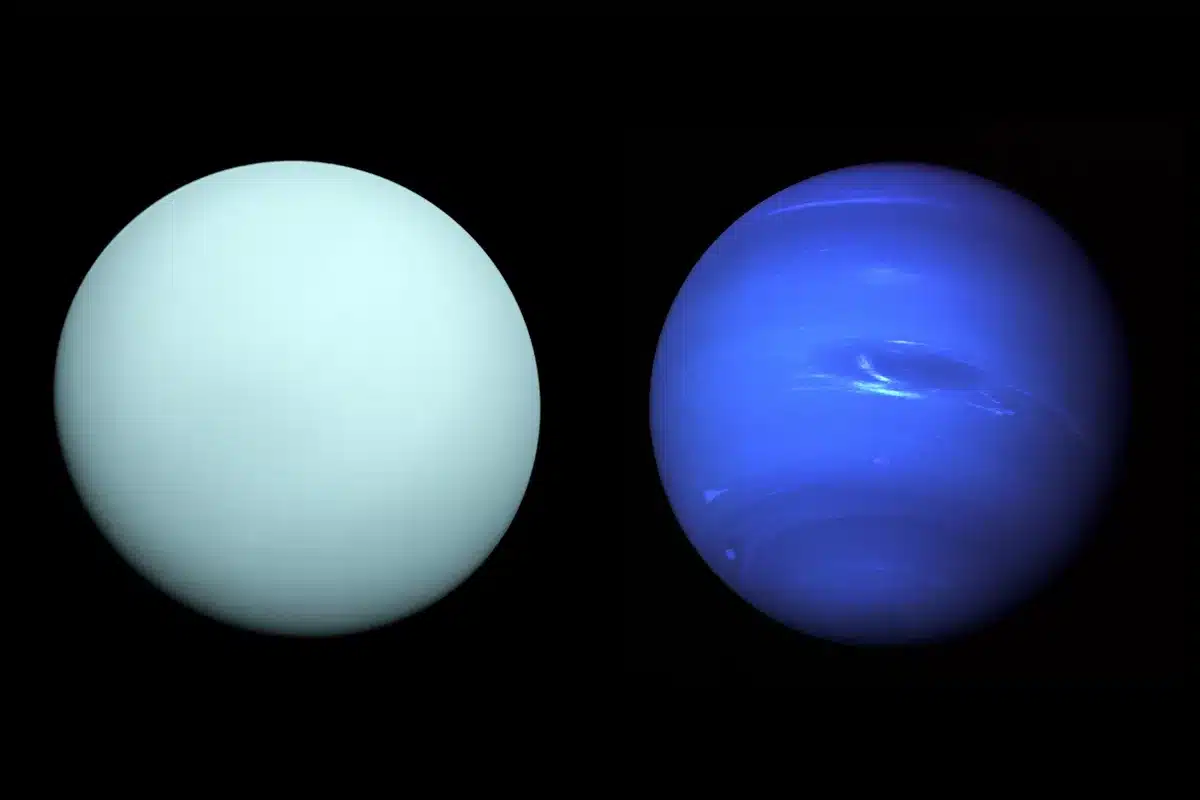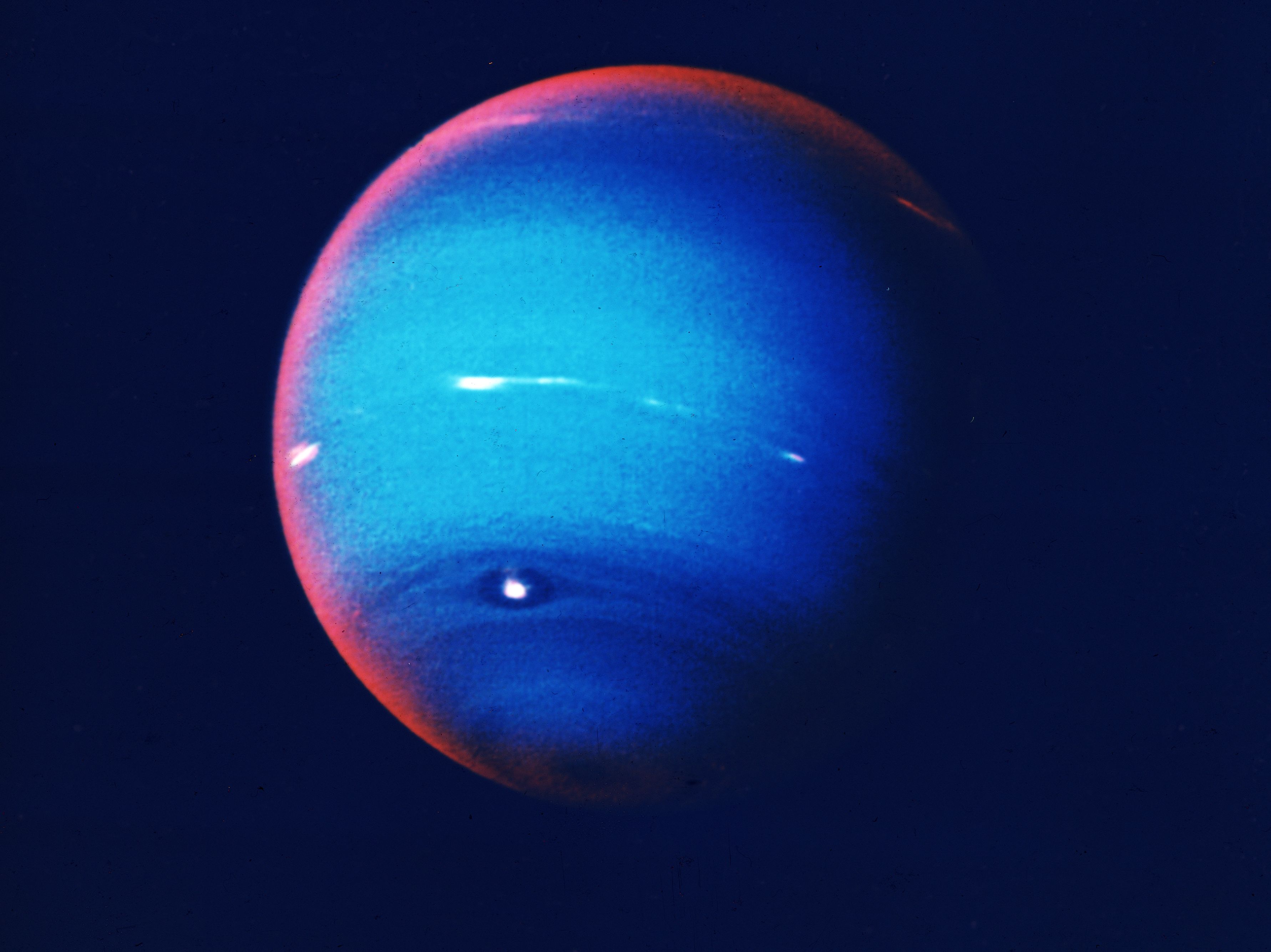Science
Neptune And Uranus Seen In True Colours For First Time

Our perceptions of the planets Neptune and Uranus colors were incorrect, according to a study headed by UK astronomers.
Images from a satellite mission in the 1980s revealed that Neptune is a deep blue while Uranus is green.
However, a study found that the two ice giant planets had comparable colors of greenish blue.
It has been revealed that previous photos of Neptune were modified to display elements of the planet’s atmosphere, altering its real color.
“They tweaked the colors, which I think everyone on Instagram has done at some point in their lives,” Prof Catherine Heymans, Astronomer Royal for Scotland and a University of Edinburgh astronomy professor, told BBC Radio 4’s Today.
“They accentuated the blue just to reveal the features that you can see in Neptune’s atmosphere, and that’s why the image looks very blue, but in reality, Neptune is actually pretty similar to Uranus.”Our perceptions of the planets Neptune and Uranus colors were incorrect, according to a study headed by UK astronomers.
Neptune And Uranus Seen In True Colours For First Time
Images from a satellite mission in the 1980s revealed that Neptune is a deep blue while Uranus is green.
However, a study found that the two ice giant planets had comparable colors of greenish blue.
It has been revealed that previous photos of Neptune were modified to display elements of the planet’s atmosphere, altering its real color.
“They tweaked the colors, which I think everyone on Instagram has done at some point in their lives,” Prof Catherine Heymans, Astronomer Royal for Scotland and a University of Edinburgh astronomy professor, told BBC Radio 4’s Today.
“They accentuated the blue just to reveal the features that you can see in the atmosphere, and that’s why the image looks very blue, but in reality, Neptune is actually pretty similar to Uranus.”
According to Prof Patrick Irwin of the University of Oxford, who conducted the research, astronomers have long known that most modern photographs of the two planets need to adequately depict their real colors.
Neptune And Uranus Seen In True Colours For First Time
“Even though the artificially saturated colour was known at the time amongst planetary scientists – and the images were released with captions explaining it – that distinction had become lost over time.”
According to Dr. Robert Massey, deputy director of the Royal Astronomical Society (RAS), image enhancement is standard in astronomical research.
“It would be foolish to look at an astronomy image and not suspect that it has been enhanced.” They must be since it is how they are processed to view things.
“It’s not that there was any conspiracy to keep it from the public!”
Prof Irwin and his colleagues processed the raw data to create what they believe is the ”best realistic picture yet” of the colors of Neptune and Uranus.
The first misunderstanding arose as a result of the Voyager 2 spacecraft mission’s ability to record images of both planets in three distinct colors.
The photos were recombined to create composite color images, which were only sometimes evenly balanced. The contrast was also heavily boosted to reveal details in the planets’ clouds, bands, and winds. Both methods made Neptune appear bluer than it was.
Neptune And Uranus Seen In True Colours For First Time
In their recent study, the researchers used data from the Hubble Space Telescope Imaging Spectrograph and the Multi Unit Spectroscopic Explorer on the European Southern Observatory’s Very Large Telescope.
Each pixel in both devices is a continuous spectrum of colors, allowing the researchers to produce the true colors of both planets.
According to the analysis, Uranus and Neptune are comparable in greenish-blue hue, albeit there is a minor difference. Neptune has a hint of extra blue, which the model explains is due to a weaker haze layer on that planet.
The study also discovered that Uranus appears greener during the summer and winter when one of its poles points towards the Sun. However, when the Sun is over the equator in the spring and autumn, it has a bluer color.
SOURCE – (BBC)
































